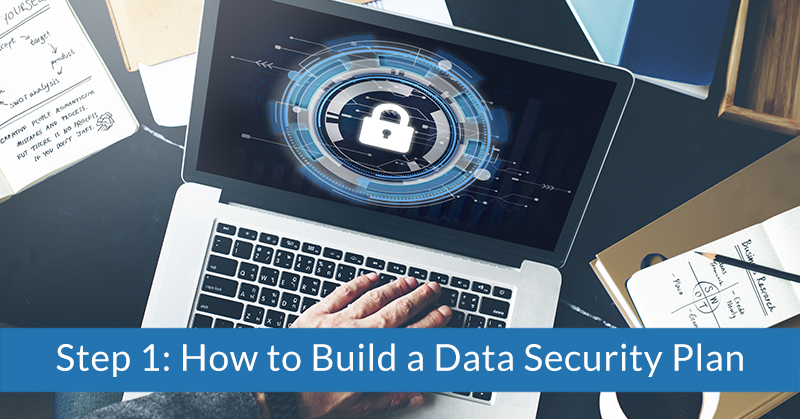Tax season is around the corner and tax preparers, accountants and bookkeepers are all getting ready. If you don't have a written data security plan (or if you have one and haven't recently reviewed it), today is the day to start it. In these articles, we will walk you step-by-step through the process so that you protect your clients' data and reduce the risk for your own practice.
The IRS recommends that tax professionals, whether they are tax preparers, accountants or bookkeepers, all safeguard their data. There are six components to a data security plan per IRS recommendations.
- Install and update antivirus software that scans files and memory for malware
- Use firewalls to shield your computer or network from malicious traffic or malware
- Use two-factor authentication to secure email, accounting software or any password-protected product
- Routinely back up critical files to a secure external hard drive or cloud storage service
- Encrypt files on computers and removable media
- Write down your data security plan as required by the Federal Trade Commission's Safeguard Rule 5
Step 1: Install and Update Antivirus Software
You may believe that you are safe from viruses and malware if you are careful about the websites you visit. Unfortunately, that is far from true. As you have seen in the news with increasing frequency, hackers have become very intelligent, sophisticated and determined. So it is essential that you install adequate antivirus software to proactively protect you from threats.
Antivirus Software Options
You will find a number of options for antivirus software. The IRS does not provide recommendations for any specific anti-virus software programs for tax preparers (or by extension all accounting and bookkeeping professionals). However, they do list the following antivirus programs for internal IRS use:
- Windows – Symantec Antivirus
- UNIX – Cybersoft V-Find
There are other high-quality programs you can use. At Woodard, we internally use AVG Business; however, our consulting team at Woodard Consulting Group implements Microsoft's overall comprehensive security, including Windows Security. for their clients.
Setting up Antivirus Computer Scans
Once you have selected a program, you will need to correctly set it up. Ideally, you will have selected a program that automatically scans specific files and/or directories in real time and additionally prompts you to perform complete system scans.
If your program does not automatically scan new files, then you will need to manually scan all files and media you get prior to opening them. To do this, you will need to save/scan attachments and downloads instead of opening them directly as well as scan all portable media before opening the files.
Running Antivirus Software Updates
It is critically important to have the latest updates of your software installed on your computer. Because of the intelligence, sophistication, and (most of all) determination) of hackers, new viruses and malware are constantly being developed, meaning updates must be installed - almost constantly. During the setup phase, you should set the software to automatically receive the latest updates.
Action Items for You
If you already have antivirus software installed, take these steps.
1. Become familiar with your software features, including scanning and update features.
2. Ensure that your program is set to automatically scan all new files. If not, change the settings. If automatic scanning is not available, consider a new program.
3. Ensure that your program is set to automatically receive updates. If not, change the settings. If automatic updates is not available, consider a new program. Note: Typically, you will need to restart your computer when you install new updates. It is essential that you do so in a timely manner.
If you do not already have antivirus software installed, take these steps.
1. Select and install software today! Make sure you select one that allows for automatic scanning and automatic updates.
2. Become familiar with your software features, including scanning and update features.
3. Ensure that your program is set to automatically scan all new files. If not, change the settings.
4. Ensure that your program is set to automatically receive updates. If not, change the settings. Note: Typically, you will need to restart your computer when you install new updates. It is essential that you do so in a timely manner.
Note: If you have questions about the security of your business or Microsoft accounts, contact Woodard Consulting Group and our team will help you plan a successful and modern security plan.
.png?width=150&height=63&name=TWRlogo-regmark_blueblack%20(1).png)
.png)









Do you have questions about this article? Email us and let us know > info@woodard.com
Comments: